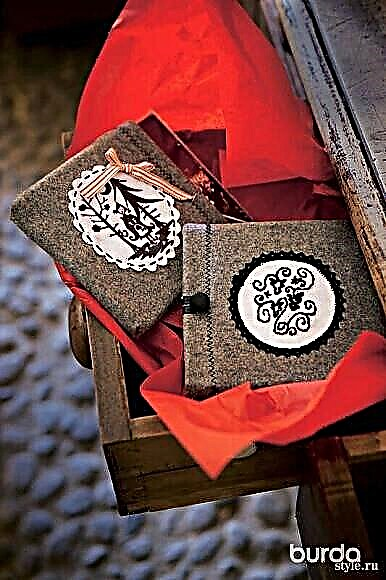What is Tai Dai, what paints and devices are needed, plus - a selection of different methods of dyeing using the Tai Dai technique.

What is Tai Dai and where is this technique applied

This trend is called the hippest trend of the coming season - things dyed in the tai-dai manner remind of the hippies of the 1960s and 70s. The technique, today called tai-dai (tie-dye - tie-dye), knot dyeing, was used hundreds of years ago by masters of ancient India, China, and Africa. The fashion of "flower children" has made Tai-Dai famous all over the world, and now this unusual way of dyeing fabrics is experiencing a new wave of popularity.

Stella McCartney / Prabal Gurung / Dior
In the tai-dai technique, clothes are often dyed (often knitwear, but not only), accessories, in particular, light scarves, interior textiles. The charm of technology, in addition to colorfulness and brightness, is its simplicity and the fact that the result is always interesting. Some irregularity, randomness of the drawing is a distinctive feature of tai-dai.

How to dye a fabric using avocado in a delicate pink color
Tai-dai: what paint and accessories are needed

* There are many techniques and methods of tai-dye painting, the results are slightly different. The essence is the same: a thing or fabric in one way or another is folded, bandaged or pulled with elastic bands, and then painted.
* For tai-dai, resistant dyes for fabrics are suitable, either initially liquid or powder, which must be diluted with water. Due to the popularity of technology, there are also paints that are positioned as dyes specifically for Tai Dai.
* In all cases, also stock up on rubber or plastic gloves and plastic containers for painting.
* Methods of applying paint to the material may be different. You can immerse a thing in paint, apply paint from a bottle with a tip or spray, paint with a brush, sponge and so on.
* It is better to protect the working surface with a film.
* The best results are obtained when dyeing natural fabrics and materials - cotton, viscose, linen, silk.
* Wash the item / fabric without using an air conditioner and do not dry before use.
We dye the fabric with natural dyes
We have compiled a selection of several basic methods that give a different picture.
1. The basic method of Tai Dai - a t-shirt with a spiral pattern: a master class

One of the easiest ways is suitable, for example, for coloring a t-shirt or scarf.
You will need:
- paint 5 colors;
- stationery gum;
- gloves;
- fork.
Step 1

Wash the t-shirt. Lay out the wet T-shirt on the work surface, put the fork in the center and rotate so that the T-shirt curls around it.
Step 2

Drag the folded T-shirt 3-4 rubber bands.
Step 3

Prepare the paints. Water different colors on different sectors of the folded T-shirt.
Step 4

Then proceed as indicated on the instructions for your paint. This paint, for example, must be kept for 6-8 hours to obtain a saturated color. This painted t-shirt will spend in a closed bag. Then it must be rinsed and dried.
How to decorate a t-shirt with your own hands
2. Chaotic dyeing - jeans in the technique of tai-dai: master class

This method differs from the previous folding technique - here it is chaotic. It is more convenient to work with dense fabric, for example, with denim.
You will need:
- paint 2 colors (here blue + green);
- stationery gum;
- gloves.
Step 1

Wash jeans and lay them down on a work surface with wet ones. Hands randomly crumple the fabric.
Step 2

Fix the folds with elastic bands, putting them on randomly too.
Step 3
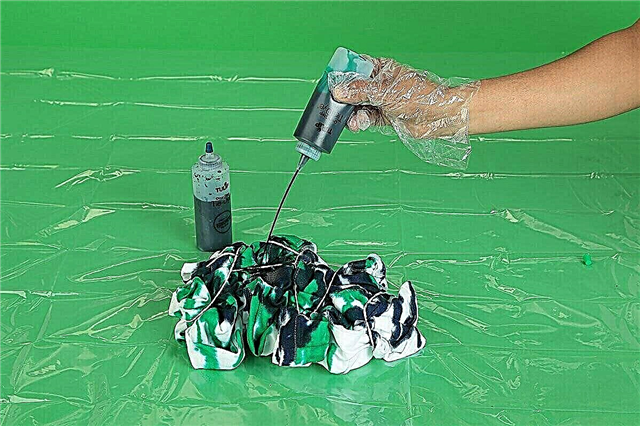
Apply paint from all sides - first one color, then another. Then proceed in accordance with the instructions for your dye.
How to make DIY scuffs on jeans
3. Tie-dye striping: a master class
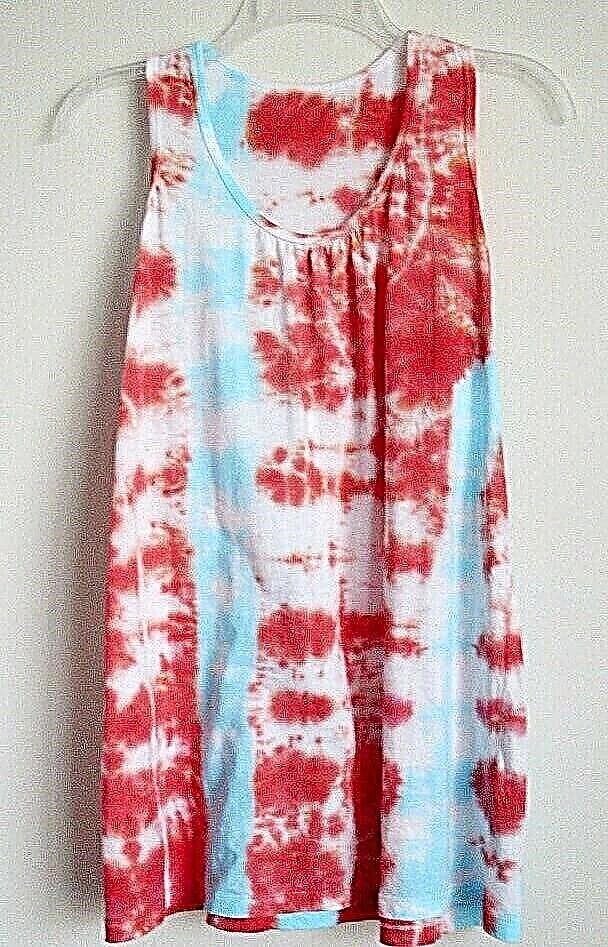
A method that allows you to get a result with blurry stripes.
You will need:
- paint of 2 colors,
- stationery gum;
- gloves.
Step 1


Fold the washed wet shirt in a pile (see the diagram in the photo) and drag it with elastic bands in 6 places.
Step 2


Apply paint to areas free of gum, leave for exposure to paint. Then proceed in accordance with the instructions for your paint.
How to decorate jeans with lace and bleach
4. Pattern bleach + coloring Tai-dai: master class

In this method, the application of patterns with bleach is combined with painting with a liquid dye. It makes sense to take a color thing, the most vivid contrasting result is obtained with things of dark saturated colors.
You will need:
- bleach and a bubble with a nose for more convenient application;
- tank for mixing;
- stationery gum;
- paint of several colors;
- gloves;
- scissors.
Step 1

Fold the T-shirt in a tourniquet and intercept with stationery gum at a distance of about 3 cm from each other.
Step 2

Dilute the bleach with water 1: 1 and pour the mixture into a bottle with a spout.
Step 3

Put on gloves. Pour the gum-free areas of the t-shirt with the mixture.
Step 4

Wait for the bleach to discolor the material to the desired shade. Cut off the elastic bands and wash or rinse the shirt well to remove the bleach. Do not dry the shirt, leave it wet.
Step 5

Lay out the t-shirt and apply the paint of different colors on the bleached areas. Then proceed in accordance with the instructions for your paint.
Option:



And if you roll up the T-shirt with a spiral, apply bleach from the spray gun, and then use different colors from it, you will get a cosmic pattern.
We decorate sneakers: 7 workshops
5. The technique of dyeing Tai Dai using ice: a master class

Ice staining gives a softer, as if melting, result. It’s good to take not too many flowers - 2-3.
You will need:
- paint 2-3 different colors;
- stationery gum;
- scissors;
- a sufficient number of ice cubes;
- grate and container for coloring.
Step 1
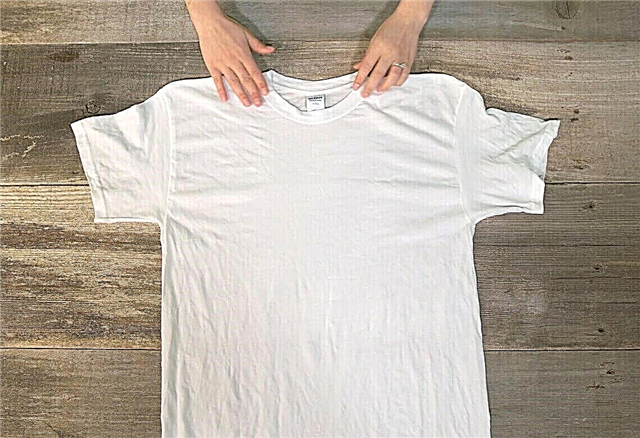
Wash the item and leave it moist.
Step 2

Collect small bundles of wet material and bond with rubber bands.
Step 3

Put the grate on the container, put the thing to be painted on top. Sprinkle ice on top so that it covers the whole thing.
Step 4

Apply paint to the ice so that it flows further down. If you have powder paint, you can not dilute it with water, but pour the powder directly onto the ice. Another option is to dilute the paint with water in advance and freeze it, put colored ice cubes on the thing.
Step 5
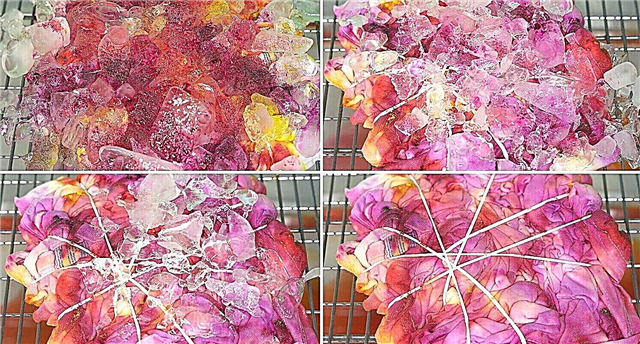
The ice should completely melt. In the process of its melting, the paint penetrates the fabric.
Step 6

Cut off the rubber bands and proceed according to the instructions for your paint.
We dye fabrics and clothes using the Japanese shibori technique
6. Tai-dai using the "kaleidoscope" technique: master class

The method is similar to the previous one, but slightly different in the technique of folding things and applying paint. The pattern is symmetrical.
You will need:
- paint of different colors;
- stationery gum;
- ice;
- thick plastic or whatman paper to make a wide ring;
- grate and container for coloring;
- gloves.
Step 1

Fold the washed wet T-shirt in half.
Step 2


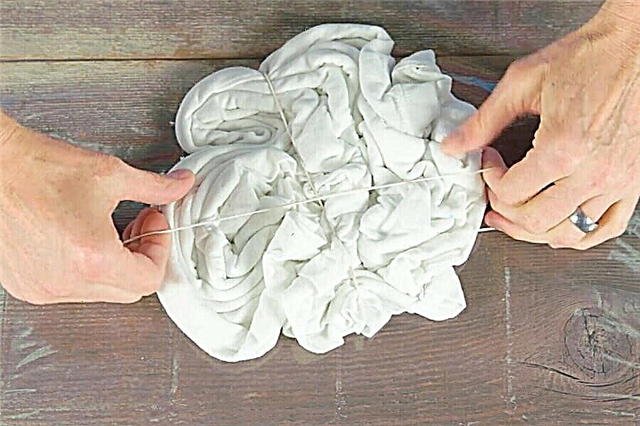
Capturing all layers of a T-shirt, roll up a few small spirals. Crumple the remaining areas randomly and fasten everything with a few rubber bands.
Step 3

From thick paper or plastic, make the side so that it is a few centimeters above the thing.
Step 4

Place the thing with the side on the grate, the grate above the container, pour ice on top. On ice, apply liquid or powder paint to half of the prepared colors. Let the ice melt.
Step 5

When the ice has melted, gently turn the thing over, pour ice again and apply the remaining colors.
Step 6

When the second portion of the ice has melted, cut off the gum and act according to the instructions for your paint.
Photo: tiedyeyoursummer.com, wheretoget.it, thekeytochic.com, denydesigns.com, fabstitches.com, petscribbles.com


